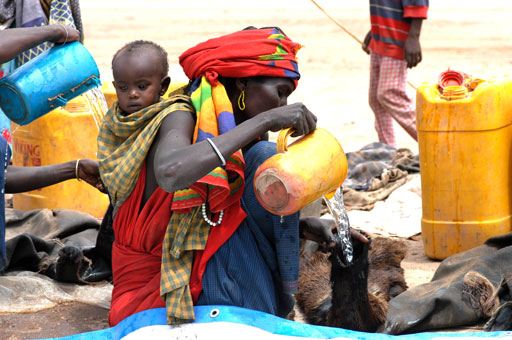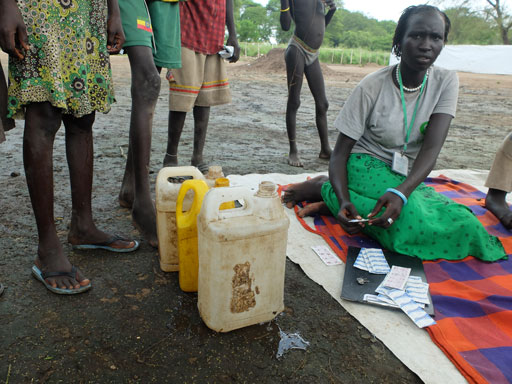14.1 What is emergency WASH?
An emergency is defined as an unexpected and usually dangerous situation that calls for immediate action (Merriam Webster, 2015). Floods, droughts and earthquakes are all possible causes of emergency situations. In such an emergency, many systems you rely on may not function as well as they usually do. Utilities such as electricity, water and phone services may be disrupted. War and other conflicts can also be the cause of emergencies and may result in many people leaving their homes and moving to safer areas. Refugee camps for people fleeing from natural or man-made disasters may be established in locations that do not have the resources to meet basic human needs for water, food and shelter.
People in emergency situations are generally much more susceptible to illness and death from disease, often caused by a lack of sanitation, inadequate water supplies and poor hygiene. Diarrhoea and infectious diseases transmitted from faeces to mouth are the most significant health problems. Increased risk of disease also arises from overcrowding, exposure to new pathogens and the disruption of routine and safe habits.
Inevitably it is the poorest and weakest in society – children, the elderly and disabled – who are most vulnerable in such circumstances and need particular consideration. It is also important to note that whatever physical distress people suffer in an emergency event they will also be mentally traumatised so psychosocial care and counselling are vital components of any response plan. ‘Psychosocial’ refers to both psychological and social effects, which continually interact and influence each other. ‘Psychological effects’ are those that affect perceptions, memory, thoughts, learning, emotions and behaviour. ‘Social effects’ are concerned with altered relationships with family and community (UNICEF, 2006).
Along with food and shelter, safe water, hygiene and sanitation are the highest priority in emergency situations. Unless adequate emergency WASH services are provided quickly to emergency-affected people, disease and possibly death are likely to follow. And unless good hygiene is consistently practised by affected people, the danger of diarrhoea, cholera and other disease outbreaks will persist. This is true in all types of emergencies, from rapid onset natural disasters to long-term crises caused by a range of complex factors.
The main objective of WASH intervention in emergencies is to reduce the transmission of diseases through the promotion of good hygiene practices, the provision of safe drinking water, as illustrated in Figures 14.1 and 14.2, and the reduction of health risks related to poor sanitation.


Learning Outcomes for Study Session 14
